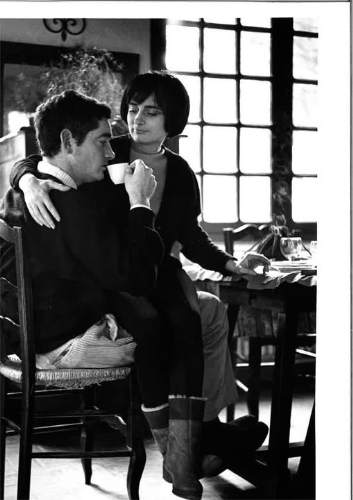
© Facebook Agnès Varda Officiel
У паризькому Музеї Карнавале відкрилась масштабна виставка, присвячена Аньєс Варда — видатній режисерці, фотохудожниці та піонерці французької «нової хвилі». Експозиція під назвою «Париж Аньєс Варда: звідси і туди» пропонує глядачам новий погляд на творчість митчині через її фотографії, кінофрагменти, особисті архіви та мистецькі інсталяції. Аньєс Варда (1928–2019) розпочала свій творчий шлях як фотографиня — ще до того, як стала легендою кінематографа. Вона вважала фотоапарат не лише інструментом, а способом мислення. Її чорно-білі світлини 1950-х років із паризької вулиці Дагер, де вона мешкала і працювала, стали основою її візуальної мови: щирість, чутливість, увага до «простих» моментів. Варда не просто знімала людей — вона співпереживала їм. На відміну від багатьох режисерів, які створюють фільми в межах знімального майданчика, Варда перетворила повсякденне життя на мистецтво. Її кіно — це продовження її щоденної реальності. Вона бачила кіно і фотографію як органічну частину буття, а не окрему професію. Власне, саме цю філософію і намагається передати виставка в Музеї Карнавале — зібравши роботи, в яких Париж постає не як фон, а як повноцінний герой її історій.
Agnès Varda’s Paris: From Here to There — A Tribute to an Artist Who Saw the World Through the Lens of Life
A major exhibition has opened at the Musée Carnavalet in Paris, dedicated to Agnès Varda — the celebrated filmmaker, photographer, and pioneering figure of the French New Wave. Titled “Agnès Varda’s Paris: From Here to There”, the show offers visitors a fresh perspective on her body of work through a curated selection of photographs, film excerpts, personal archives, and artistic installations. Agnès Varda (1928–2019) began her creative journey as a photographer — long before she became a cinematic icon. For her, the camera was not just a tool but a way of thinking. Her black-and-white photographs from the 1950s, taken on Rue Daguerre in Paris where she lived and worked, laid the foundation for her visual language: honesty, sensitivity, and a deep appreciation for the “ordinary.” Varda didn’t simply photograph people — she empathized with them. Unlike many directors who confine their art to film sets, Varda transformed everyday life into art. Her cinema was an extension of her daily reality. She saw filmmaking and photography as inseparable from existence itself — not merely a profession, but a way of living. It is precisely this philosophy that the exhibition at the Musée Carnavalet seeks to convey — presenting works in which Paris appears not just as a backdrop, but as a fully-fledged character in her stories.
1522